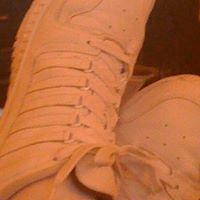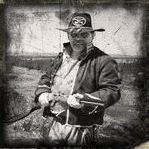John Mark Papazian
age ~90
from Massapequa, NY
- Also known as:
-
- John M Papazian
- John M Papzian
John Papazian Phones & Addresses
- Massapequa, NY
- Sayville, NY
- 39546 Stags Leap Dr, Murrieta, CA 92563
- 16325 Roca Dr, San Diego, CA 92128
- 18093 Colonnades Pl, San Diego, CA 92128
- Bayport, NY
- Beaumont, CA
- Gt Barrington, MA
- Temecula, CA
Specialities
Buyer's Agent • Listing Agent
Name / Title
Company / Classification
Phones & Addresses
President
AMERICAN AIRCRAFT INTERNATIONAL CORP
317 Main St, Great Barrington, MA 01230
12644 Senda Acantilada, San Diego, CA 92128
12644 Senda Acantilada, San Diego, CA 92128
President
SELECTRADE ENTERPRISES, INC
317 Main St, Great Barrington, MA 01230
12644 Senda Acantilada, San Diego, CA 92128
12644 Senda Acantilada, San Diego, CA 92128
Resumes

John Papazian
view source
John Papazian
view source
John Papazian
view source
John Papazian
view source
John Papazian
view sourceUs Patents
-
System And Method For Forming Sheet Metal Using A Reconfigurable Tool
view source -
US Patent:6363767, Apr 2, 2002
-
Filed:Feb 29, 2000
-
Appl. No.:09/514983
-
Inventors:John M. Papazian - Great Neck NY
Jerrell A. Nardiello - Hicksville NY
Robert C. Schwarz - Huntington NY
John Melnichuk - Bethpage NY -
Assignee:Northrop Grumman Corporation - Los Angeles CA
-
International Classification:B21D 3700
-
US Classification:72413, 72297
-
Abstract:A system for forming sheet metal ( ) is disclosed. The system comprises a support plate ( ) that is coupled to a base ( ) and has at least one side plate ( ) adjacent thereto. A clamping mechanism ( ) fixes the side plate ( ) to the support plate ( ) so sheet metal ( ) can be formed.
-
Single-Die Modularized, Reconfigurable Honeycomb Core Forming Tool
view source -
US Patent:6578399, Jun 17, 2003
-
Filed:Sep 9, 1999
-
Appl. No.:09/392710
-
Inventors:Edwin Gerard Haas - Sayville NY
Robert Charles Schwarz - Huntington NY
John M. Papazian - Great Neck NY -
Assignee:Northrop Grumman Corporation - Los Angeles CA
-
International Classification:B21D 700
-
US Classification:72 57, 72413, 72 38, 723421
-
Abstract:A die and a stationary member of resilient gas permeable composition are adapted to receive between them a three-dimensional honeycomb core article. The die includes an array of elongated mutually parallel translating pins, each terminating at a tip end and arranged in a matrix for longitudinal movement between retracted and extended positions. The stationary member includes a receiving surface facing and laterally coextensive with the tip ends of the translating pins. The tip ends are engageable with first end surface of the article, the receiveing surface of the stationary member being engageable with a second end surface of the article. The die includes a housing movably mounting the translating pins, drive output shafts drivingly connected with each associated translating pin, a transmission for independent driving controllable interconnection of each translating pin, and a selectively energizable controller interconnecting each transmission to thereby achieve selective rotation of at least one translating pin. Each translating pin may be hollow and have planar sides which prevents its rotation by the restraining action of adjacent translating pins. A controller individually moves the translating pins in a coordinated manner into engagement with the first end surface to thereby impart a desired contour while simultaneously urging the second end surface of the honeycomb core article into engagement with the receiveing surface of the stationary member producing a contour substantially similar to the first end surface.
-
Color Coded Light For Automated Shape Measurement Using Photogrammetry
view source -
US Patent:7154613, Dec 26, 2006
-
Filed:Mar 15, 2004
-
Appl. No.:10/800499
-
Inventors:John M. Papazian - Great Neck NY, US
-
Assignee:Northrop Grumman Corporation - Los Angeles CA
-
International Classification:G01J 1/42
-
US Classification:356601, 356603, 356606, 356614, 356622
-
Abstract:A method and apparatus for using a plurality of regions of colored light to index and locate discrete targets in photogrammetry systems. The colored regions of light are used to determine a unique location on the surface of a three-dimensional object. Multiple projections of colored regions may be used to determine precise locations on the surface of the object. Each colored region may be assigned a color-numeric identified to assist in the indexing process. The process is suitable for determining the shape of aircraft, watercraft and automotive parts.
-
In-Situ Large Area Optical Strain Measurement Using An Encoded Dot Pattern
view source -
US Patent:7377181, May 27, 2008
-
Filed:Mar 10, 2006
-
Appl. No.:11/373353
-
Inventors:Jerrell Anthony Nardiello - Hicksville NY, US
John M. Papazian - Great Neck NY, US
John Steven Madsen - Commack NY, US -
Assignee:Northrop Grumman Corporation - Los Angeles CA
-
International Classification:G01B 11/16
-
US Classification:73800, 356 355
-
Abstract:A method of measuring strain in a test specimen comprises the steps of placing a pattern of marks on a surface of the test specimen, wherein the pattern of marks includes a plurality of target marks and a plurality of sets of coded marks, using the sets of coded marks to identify locations of at least two of the target marks, and using a change in distance between at least two of the marks to determine strain in the test specimen. An apparatus that performs the method is also provided.
-
Method For Surface Replication Via Thermoplastic Media
view source -
US Patent:7559233, Jul 14, 2009
-
Filed:Jan 18, 2007
-
Appl. No.:11/654945
-
Inventors:Jerrell A. Nardiello - Hicksville NY, US
John M. Papazian - Great Neck NY, US
John Steven Madsen - Commack NY, US -
Assignee:Northrop Grumman Corporation - Los Angeles CA
-
International Classification:G01N 19/08
-
US Classification:73104
-
Abstract:A method of inspecting a specimen under test may comprise the step of disposing melted thermoplastic media onto a surface under test of the specimen under test, maintaining a constant temperature of the specimen under test at or about room temperature wherein the temperature of the specimen under test is initially lower than the temperature of the melted thermoplastic media, hardening the melted thermoplastic media to produce a replica with imperfections molded into a mating surface of the replica, and inspecting the mating surface of the replica for unsatisfactory or satisfactory imperfections in the specimen under test.
-
Device And Method For Sequentially Cold Working And Reaming A Hole
view source -
US Patent:7770276, Aug 10, 2010
-
Filed:Aug 25, 2006
-
Appl. No.:11/510156
-
Inventors:Jerrell A. Nardiello - Hicksville NY, US
John M. Papazian - Great Neck NY, US
John Steven Madsen - Commack NY, US -
Assignee:Northrop Grumman Corporation - Los Angeles CA
-
International Classification:B24B 39/00
B23B 51/00 -
US Classification:29 9001, 72324, 72325, 408 22
-
Abstract:A device and a method are provided to allow a user to ream a hole to an accurate final diameter as desired, and at the same time, to cold work the hole to induce a beneficial residual stress that will enhance the life of the component by retarding the onset and growth of fatigue cracks in the hole. The basic design of the device has an elongated body having a forward end portion to extend through a hole to be reamed and cold worked, a reamer section formed on the circumference of the forward end portion to enlarge the hole, and a burnishing section formed on the circumference of the elongated body adjacent to the reamer. The burnishing section is operative to upset the material around the hole, so as to result in a residual stress beneficial to the hole. The reamer section is in the form of a plurality of cutting edges extending from a tip of the elongated body, while the burnishing section is also in the form of a plurality of cutting edges adjacent to the reamer section along the elongate body. The cutting edges of the reamer sections are parallel straight cutting edges or helical cutting edges.
-
In-Situ Optical Crack Measurement Using A Dot Pattern
view source -
US Patent:20110106459, May 5, 2011
-
Filed:Oct 29, 2009
-
Appl. No.:12/608497
-
Inventors:Jerrell A. Nardiello - Hicksville NY, US
John M. Papazian - Great Neck NY, US
Daniel R. Fridline - Coram NY, US -
Assignee:NORTHROP GRUMMAN CORPORATION - Los Angeles CA
-
International Classification:G06F 19/00
G01L 1/00 -
US Classification:702 42
-
Abstract:A method of detecting cracks in an object includes: capturing a first image of a pattern of marks in a region of interest on a surface of the object; constructing a finite element model of the region of interest having nodes corresponding to the marks in the pattern; subjecting the object to a first mechanical load to produce strains in the object; capturing a second image of the pattern; computing strains in the object based on relative changes in locations of the marks in the first and second images; modifying the finite element model to produce a crack versus surface strain map; capturing a third image of the pattern; and comparing the locations of marks in the third image to the crack versus surface strain map to identify a crack in the object. An apparatus that performs the method is also provided.
-
Modularized Reconfigurable Heated Forming Tool
view source -
US Patent:60890614, Jul 18, 2000
-
Filed:May 12, 1999
-
Appl. No.:9/310664
-
Inventors:Edwin Gerard Haas - Sayville NY
Robert Charles Schwarz - Huntington NY
John M. Papazian - Great Neck NY -
Assignee:Northrop Grumman Corporation - Los Angeles CA
-
International Classification:B21D 712
-
US Classification:72 148
-
Abstract:Tooling apparatus comprises opposing first and second dies adapted to receive a three-dimensional honeycomb core article therebetween and including opposedly aligned arrays of elongated mutually parallel translating pins, each terminating at a tip end and arranged in a matrix for longitudinal movement between a retracted position and an extended position engageable with the article. A controller individually moves each of the translating pins in a coordinated manner between the retracted and extended positions and into engagement with the article to form it to a predetermined contour. Each die includes a housing on which the translating pins are movably mounted, a plurality of drive output shafts each drivingly connected with an associated translating pin, and a transmission disposed in the base for independent driving controllable interconnection of each translating pin with a rotational drive source, and a controller interconnecting each transmission for selective energization thereof to thereby achieve selective rotation of at least one of the translating pins. The translating pins may have planar sides which prevent their rotation by the restraining action of adjacent translating pins. Each of the translating pins may define an internal cavity extending between bottom and tip ends, each being perforated and the apparatus may include a pump for delivering temperature controlled gas to each hollow pin tube for flow through the perforations in the bottom end, through the internal cavity, and out through the perforations in the tip end for delivery to cells of the article.
Classmates

John Papazian
view sourceSchools:
Queens Public School 120 Flushing NY 1960-1968
Community:
Steven Katz

Riverside High School, Wi...
view sourceGraduates:
John Papazian (1969-1973),
Yolande Murphy (1979-1983),
Igor Varga (1978-1982),
maurice dwyer (1964-1968)
Yolande Murphy (1979-1983),
Igor Varga (1978-1982),
maurice dwyer (1964-1968)

Queens Public School 120,...
view sourceGraduates:
John Papazian (1960-1968),
Alan Gerber (1963-1970),
Robert Buzzeo (1955-1961),
Juan Farias (1981-1984),
Janet Abbadessa (1958-1965)
Alan Gerber (1963-1970),
Robert Buzzeo (1955-1961),
Juan Farias (1981-1984),
Janet Abbadessa (1958-1965)
Googleplus

John Papazian

John Papazian

John Papazian

John Papazian
Mylife

John Papazian Whitehouse...
view sourceLocate John Papazian online with our advanced people search tool. Find all your old friends and colleagues at MyLife.
Flickr

John Papazian
view source
Jack Papazian
view source
John Papazian
view source
John R Papazian
view source
John Papazian
view source
John Hov Papazian
view sourceYoutube
Plaxo

John Papazian
view sourceSan Francisco, CAChief Information Officer, JMP Securities
Get Report for John Mark Papazian from Massapequa, NY, age ~90








